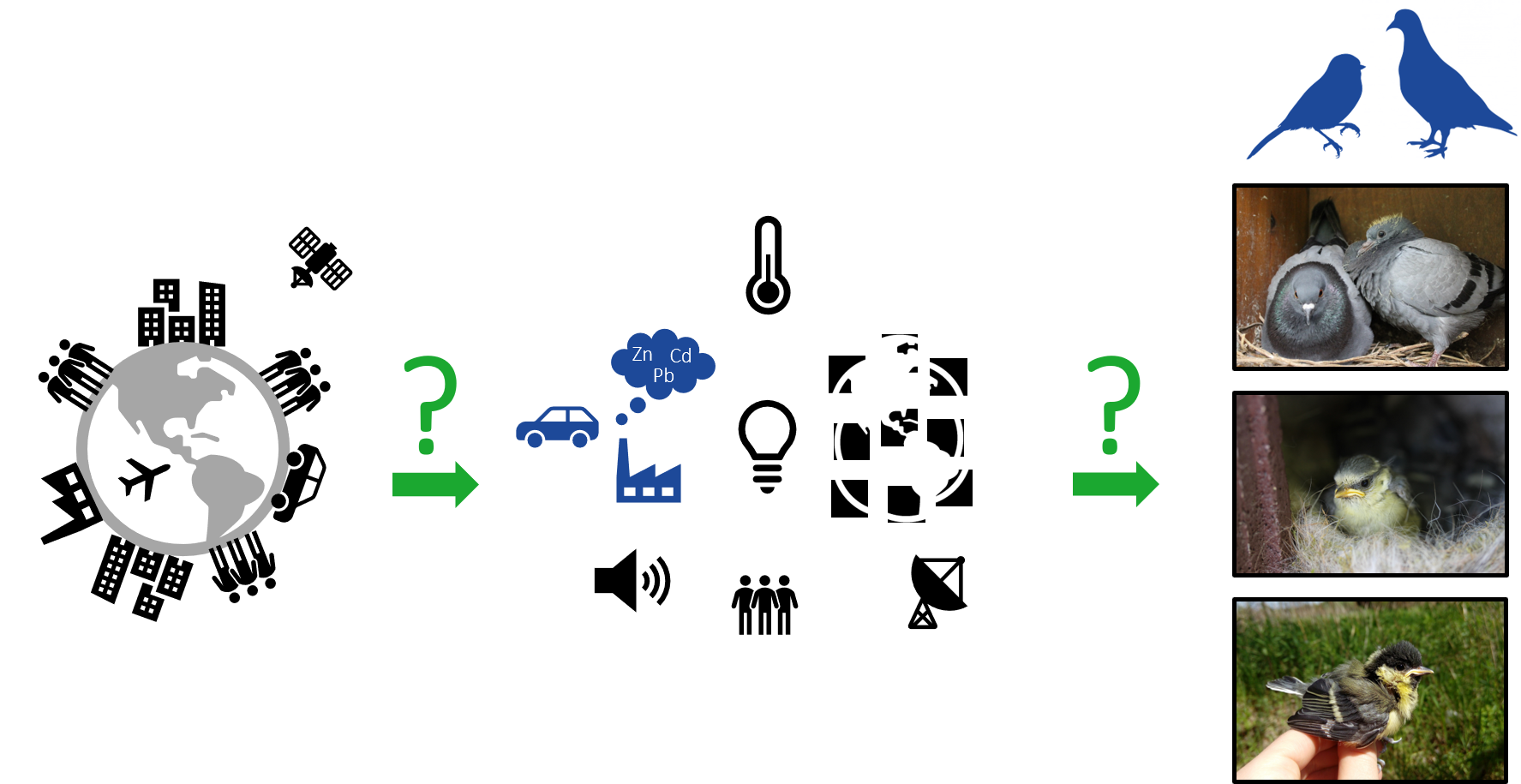Metal pollution in the urban mosaic: its effects on bird populations
Dr Marion Chatelain
University of Innsbruck, Austria
Venue: Wednesday, 11.12.2019, 13:00, CeNT Lecture Theatre 0142.
How to get there: Lecture theatre 0142 is c. ~15 meters to the right after entering CeNT
Abstract:
 Metallic trace elements (MTEs) are divided into essential and non-essential (i.e. toxic) metals. For instance, while zinc is beneficial for all aspects of immunity, lead is responsible for cognitive disorders in humans. Despite anthropogenic activities being responsible for a significant increase in MTE concentrations in the environment, especially in cities, we know little about animal exposure to MTE at a finer environmental scale (i.e. within the urban mosaic) and few studies investigated its effects on wild animal populations; even fewer in the context of urbanisation. The reasons might be two folds: first, correlative studies carried out in urban vs. rural environments often fail to disentangle the effects of inter-correlated environmental factors (e.g. chemical pollution, light pollution, human disturbance); second, experimental studies hardly expose individuals to ecologically relevant metal concentrations. To fill in this gap, I investigated 1) great and blue tit exposure to MTE within 8 cities in Poland and 2) fitness proxies in feral pigeons chronically exposed to lead and/or zinc, and in wild great and blue tit populations nesting along a gradient of urbanisation in Warsaw. I will highlight the effects of MTE exposure on bird reproductive success, its proximate causes and its implication for population evolution within the urban mosaic.
Metallic trace elements (MTEs) are divided into essential and non-essential (i.e. toxic) metals. For instance, while zinc is beneficial for all aspects of immunity, lead is responsible for cognitive disorders in humans. Despite anthropogenic activities being responsible for a significant increase in MTE concentrations in the environment, especially in cities, we know little about animal exposure to MTE at a finer environmental scale (i.e. within the urban mosaic) and few studies investigated its effects on wild animal populations; even fewer in the context of urbanisation. The reasons might be two folds: first, correlative studies carried out in urban vs. rural environments often fail to disentangle the effects of inter-correlated environmental factors (e.g. chemical pollution, light pollution, human disturbance); second, experimental studies hardly expose individuals to ecologically relevant metal concentrations. To fill in this gap, I investigated 1) great and blue tit exposure to MTE within 8 cities in Poland and 2) fitness proxies in feral pigeons chronically exposed to lead and/or zinc, and in wild great and blue tit populations nesting along a gradient of urbanisation in Warsaw. I will highlight the effects of MTE exposure on bird reproductive success, its proximate causes and its implication for population evolution within the urban mosaic.